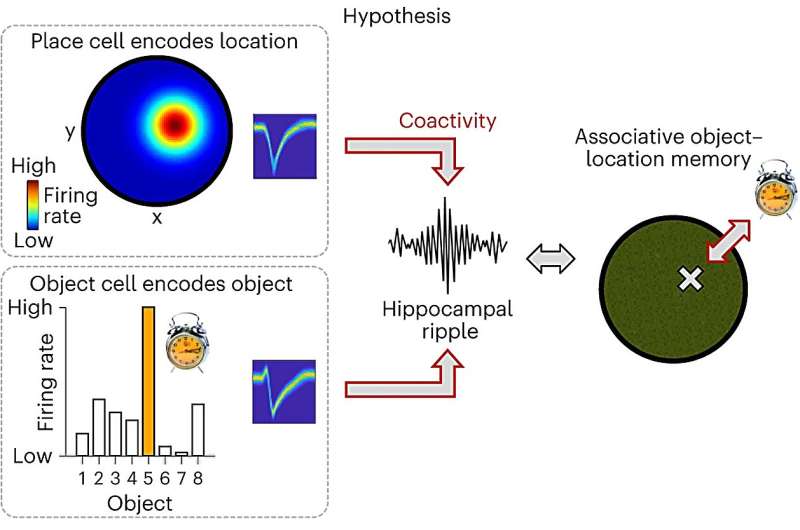This article has been reviewed according to Science X's editorial process and policies. Editors have highlighted the following attributes while ensuring the content's credibility:
fact-checked
proofread
Neuroscientists discover interactions between brain waves and nerve cells during human memory processes

Spatial navigation and spatial memory play a central role in our lives. Without these abilities, we would hardly be able to find our way around and it would be difficult to remember past events. However, the neuronal basis of spatial memory is far from being fully understood.
A research group led by Prof. Dr. Dr. Lukas Kunz, who has recently joined the University Hospital Bonn (UKB), has gained new insights into this gap in knowledge. Together with scientists from New York and Freiburg, he has discovered that different types of nerve cells become active together during spatial memory and are coordinated by brain waves ("ripples").
These results have now been published in the journal Nature Neuroscience.
Associative memory ensures that different pieces of information are linked together. "In the context of spatial memory, associative memory enables us to remember the locations of certain objects in the spatial environment," explains Prof. Kunz, research group leader for Cognitive and Translational Neuroscience at the Department of Epileptology at the UKB. He is also a member of the Transdisciplinary Research Area (TRA) Life & Health at the University of Bonn.
"For example, we can remember where in the house we put our keys." In older age or with certain diseases such as Alzheimer's, however, this ability is limited. "It is therefore important to investigate that the neuronal basis of different forms of human memory is researched further," says Prof. Kunz. In the long term, this could help in the development of new therapies for memory impairments.
Nerve cells play an important role in associative memory
Nerve cells are active while information is being retrieved from memory. To further investigate this phenomenon, the researchers recorded the activity of individual nerve cells in the brains of epilepsy patients while they performed a memory task on the computer. "In a virtual world, the test participants were asked to remember the locations of various objects," explains Prof. Kunz.
The recordings showed that different types of nerve cells became active during this memory task. Some nerve cells responded to certain objects, while other nerve cells reacted in response to certain locations. The scientists observed that the interactions between these different types of nerve cells became stronger over time when the test participants remembered the right object in the right place.
Brain waves occur simultaneously, coordinate the nerve cells
In addition to place and object neurons, the researchers observed that hippocampal brain waves ("ripples") also became active during the memory task, and thus presumably play a crucial role in the formation and retrieval of associative memories.
"Ripples could be important for the connection of different types of nerve cells and the formation of complex memories. It will be exciting to investigate this idea further in future studies," explains Prof. Kunz. It will also be interesting in the future to study how memory performance is modulated when ripples are suppressed or even triggered, providing insights into the causal relevance of ripples.
More information: Lukas Kunz et al, Ripple-locked coactivity of stimulus-specific neurons and human associative memory, Nature Neuroscience (2024). DOI: 10.1038/s41593-023-01550-x




















